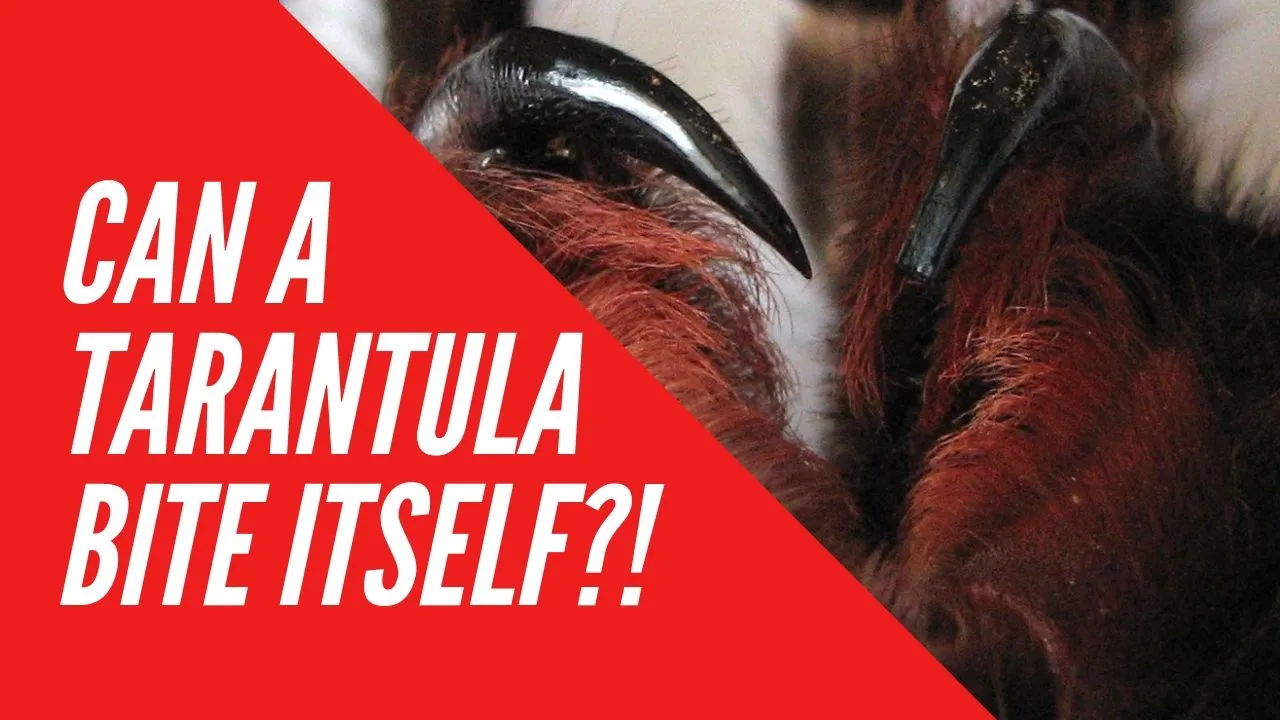What to do if a Tarantula Bites
A tarantula bite can be a startling experience, and knowing how to react is crucial. While tarantulas are not typically aggressive and their bites are rarely life-threatening, it’s important to address the situation promptly and correctly. The primary focus should be on assessing the severity, providing immediate first aid, and monitoring for any adverse reactions. This guide will walk you through the essential steps to take if you or someone you know experiences a tarantula bite, ensuring a calm and informed response. Understanding the potential symptoms and the appropriate course of action can significantly impact the outcome and promote a safe recovery.
Recognizing a Tarantula Bite
Identifying a tarantula bite involves recognizing both the immediate and delayed symptoms. Because tarantula bites can vary in their effects depending on factors like the species and the individual’s sensitivity, awareness of these signs is essential. The bites often appear as two small puncture wounds, a result of the tarantula’s fangs. It’s important to differentiate a tarantula bite from other insect bites, such as those from mosquitoes or other spiders. The initial appearance and the subsequent progression of symptoms will help in confirming the source of the bite and determining the appropriate response.
Immediate Symptoms of a Tarantula Bite

Immediate symptoms typically appear within minutes of the bite. These symptoms can include localized pain, often described as a sharp, stinging sensation at the bite site. Redness and swelling around the puncture wounds are also common. Some individuals might experience itching or a burning sensation. The intensity of these immediate symptoms can vary; some bites may cause only mild discomfort, while others might be more painful. Observing these initial reactions is key to assessing the bite’s impact.
Delayed Symptoms of a Tarantula Bite
Delayed symptoms may emerge hours or even days after the bite. These can include increased swelling, pain, and redness around the bite area. Other delayed symptoms might involve muscle cramps or spasms, particularly near the bite site. Some people may experience flu-like symptoms, such as fever, chills, and body aches. In rare cases, more severe reactions, such as difficulty breathing or allergic responses, can occur, making prompt medical attention critical.
First Aid for a Tarantula Bite
Providing first aid immediately after a tarantula bite can help to minimize discomfort and prevent complications. The primary goals are to clean the wound, reduce inflammation, and monitor for any adverse reactions. It’s crucial to act quickly and calmly to ensure effective treatment and care. Understanding the necessary steps can significantly aid in managing the situation and promoting a swift recovery.
Cleaning the Wound

The first step in treating a tarantula bite is to gently clean the wound. Use mild soap and water to thoroughly wash the bite area. This helps remove any venom or debris that might be present, reducing the risk of infection. Ensure you’re gentle to avoid further irritation. After washing, pat the area dry with a clean cloth. Maintaining cleanliness is crucial to prevent secondary infections, especially if the skin is broken.
Applying Cold Compress
Applying a cold compress to the bite site can help reduce pain and swelling. Wrap ice in a clean cloth and apply it to the area for 10-15 minutes at a time, several times a day. The cold helps constrict blood vessels, which can slow the spread of venom and alleviate inflammation. This is a simple yet effective method to manage the initial discomfort associated with a tarantula bite.
Seeking Medical Attention
In some cases, seeking medical attention is necessary. If symptoms are severe or if you experience difficulty breathing, chest pain, or widespread swelling, go to the nearest emergency room immediately. Medical professionals can provide appropriate treatment, including pain relief and medication for allergic reactions. Even if symptoms seem mild, it’s wise to consult a doctor to get professional advice and ensure there are no underlying issues.
Understanding the Tarantula Bite

Understanding the nature of a tarantula bite is important for managing it effectively. The severity can vary widely depending on several factors. Knowledge of the different aspects of the bite, from the venom to the factors affecting the reaction, is essential for making informed decisions about treatment and aftercare. This section will delve into the key aspects of tarantula bites to provide a comprehensive understanding.
Severity of the Bite
The severity of a tarantula bite varies based on several factors. Generally, tarantula bites are not considered highly dangerous to humans, and they are rarely life-threatening. However, the bite’s impact depends on factors like the species of the tarantula, the amount of venom injected, and the individual’s sensitivity. Some bites may only cause minor discomfort, while others might result in more pronounced symptoms. Understanding these variables helps to assess the level of concern and decide the appropriate response.
Venom Toxicity Levels
Tarantula venom toxicity levels differ among species. The venom of most tarantulas is considered relatively mild. The primary effects are usually localized, such as pain and swelling, rather than systemic. Some species may have more potent venom than others, but this is generally not a major concern. The overall impact of the venom largely depends on the amount injected and the individual’s physiological response. It’s important to consider the varying degrees of toxicity when assessing the potential effects of a bite.
Factors Affecting Reaction

Several factors can affect an individual’s reaction to a tarantula bite. These include the person’s overall health, any allergies, and the specific species of tarantula. Children, the elderly, and those with weakened immune systems may be more susceptible to severe reactions. Individual sensitivity levels also play a significant role; some people might experience more pronounced symptoms than others. Knowing these factors can guide the appropriate response and ensure prompt medical attention when needed.
Aftercare and Recovery
Aftercare and recovery are important aspects of dealing with a tarantula bite. Proper care helps to minimize discomfort, prevent complications, and promote healing. This includes effective pain management and careful monitoring to ensure that the bite area does not become infected. Knowing the steps to take during this period can significantly improve the outcome and help to return to normal activities as quickly as possible.
Pain Management
Pain management is a key element of aftercare. Over-the-counter pain relievers, such as ibuprofen or acetaminophen, can help reduce pain and inflammation. Applying a cold compress can also offer relief, particularly during the initial stages. For more severe pain, a doctor might prescribe stronger pain medication. Following medical advice, and using these methods, can improve comfort and aid in the recovery process.
Monitoring for Infection

Monitoring the bite area for signs of infection is essential. Keep a close eye on the site for increasing redness, swelling, warmth, or the presence of pus. If any of these symptoms occur, seek medical attention immediately, as they could indicate an infection. Keeping the area clean and dry is important to reduce infection risk. Prompt treatment of infections will help prevent complications and ensure a smooth recovery.
Long-Term Effects
In most cases, tarantula bites do not result in long-term effects. The symptoms typically resolve within a few days or weeks. Some individuals might experience lingering pain or sensitivity at the bite site for a longer period. In rare instances, there can be more serious complications, such as allergic reactions. If unusual or persistent symptoms arise, consulting with a healthcare provider is crucial to address any potential issues.
Preventing Tarantula Bites
Preventing tarantula bites requires taking several proactive measures, especially if you own or are in close proximity to these spiders. Implementing safe handling practices, avoiding any behaviors that might provoke a bite, and making informed choices about the species of tarantulas to keep can substantially reduce the risk of an encounter. Taking preventative measures is the best approach for minimizing risks and ensuring safety.
Safe Handling Practices

Safe handling is crucial when dealing with tarantulas. Always handle these spiders with care and respect. When you need to move a tarantula, use a specialized tool such as a catch cup or a long pair of tongs. Avoid direct contact with your hands if possible, as this reduces the likelihood of being bitten. Ensure a secure environment and avoid sudden movements that might startle the spider. Proper handling techniques are essential for preventing bites and maintaining safety.
Avoiding Provocation
Avoiding behaviors that might provoke a tarantula is another crucial aspect of preventing bites. Never handle a tarantula if you are unsure or if you are nervous or afraid. Avoid sudden movements, loud noises, or any actions that might startle the spider. Do not poke or prod a tarantula, and keep it away from other pets or children. Providing a calm and stable environment for the tarantula minimizes the likelihood of it feeling threatened and biting. Maintaining a respectful distance and avoiding unnecessary interactions is key.
Choosing the Right Tarantula Species
When considering keeping a tarantula, choosing a docile species can significantly lower the risk of being bitten. Research different tarantula species and consider their temperament, venom potency, and overall care requirements. Some species are known to be less aggressive and more suitable for beginners. Selecting a tarantula based on its temperament can help prevent bites and ensure a safer experience. Consulting with experienced keepers or breeders can also help you make an informed decision.
In conclusion, while tarantula bites are typically not life-threatening, knowing how to react and handle such situations is crucial. By understanding the initial steps to take, recognizing potential symptoms, and implementing preventative measures, you can ensure a safe experience with these fascinating creatures. Prioritizing caution, promoting knowledge, and fostering respect will help to manage interactions and ensure the well-being of both the tarantulas and their handlers.
